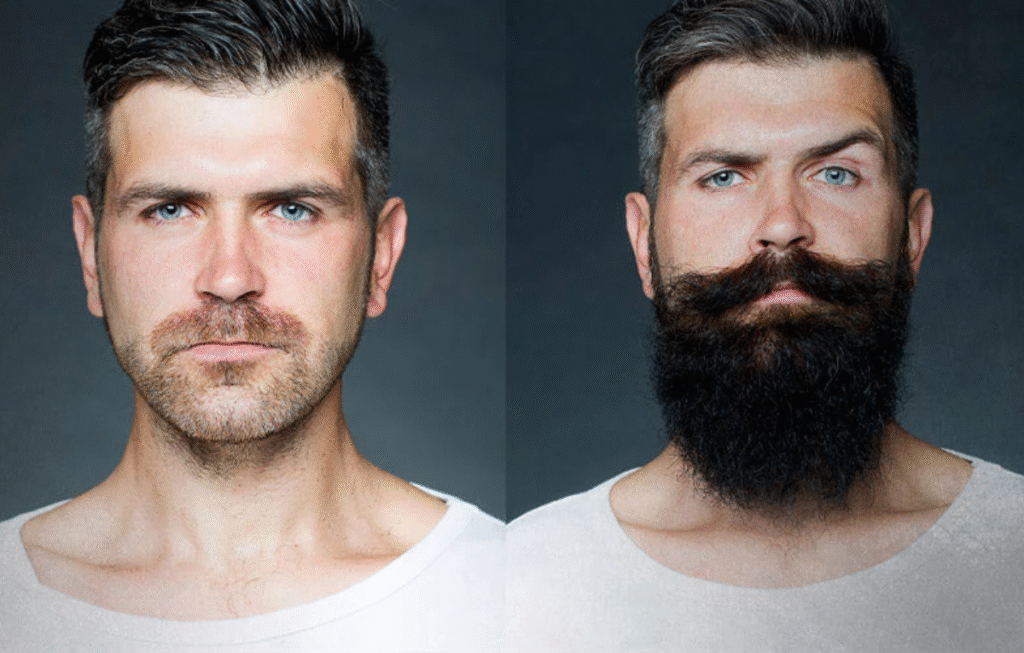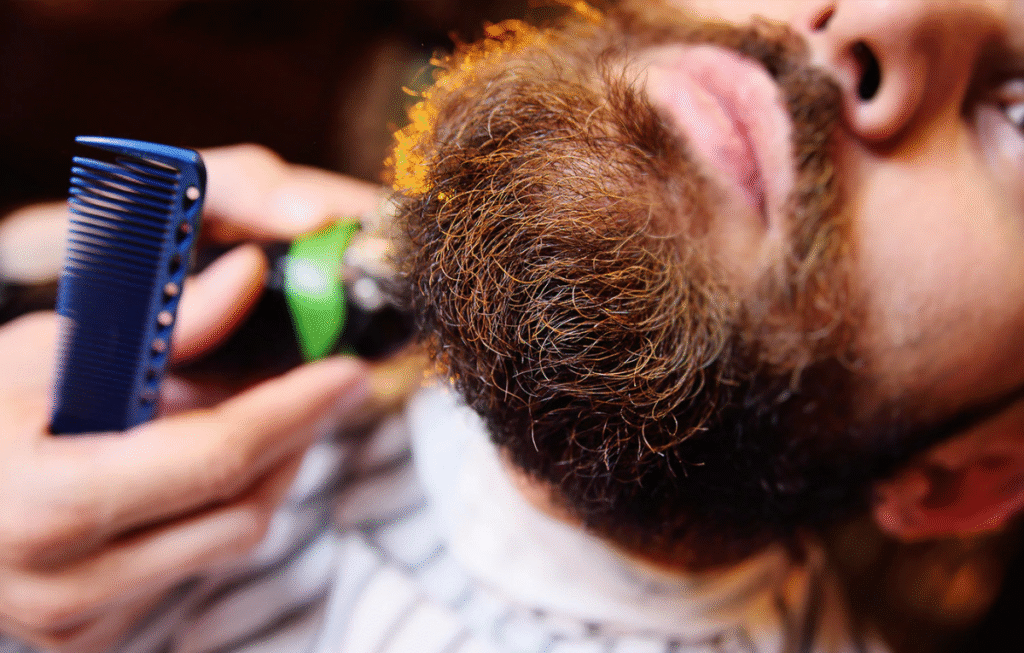Introduction: The Art of Building the Perfect Beard
Modern society has adopted the sentiment of a beard as a representation of masculinity, confidence, and style. There are many styles of beards to maintain ranging from stubble, to goatees, to a Viking-like beard, which will depend on your level of commitment to maintaining the facial hair; most of which require time, regular upkeep, and in some cases, science.
But don’t panic! Plus, you can have a great-looking beard while not laying all your money down to pay for a barber or a salon. If you have the knowledge, it’s realistic to achieve a full, clean, and respectable style beard from your own home.
This article will focus on the methods to obtain that ideal beard, that is, the different stages of growing, grooming, and maintaining, so that every phase of the trip from day one to everyday maintenance, from shaving to simple styling, is covered.
Understand Your Beard Growth Cycle Beforehand

You might be tempted to check out different products and tools, but it is much wiser to discover how your beard grows (or does not) naturally first. There are several reasons for discrepancies in beard growth such as heredity, hormones, lifestyle, and skin care regime.
- Genetics: Some lucky men possess a dense beard genetically, while others have to be content with a thin one.
- Hormones: Testosterone and its by-product dihydrotestosterone (DHT) are the ones mostly responsible for the beard’s growth during the process.
- Lifestyle: Your beard growth rate will be affected by your overall health, diet, and stress levels.
Pro Tip: Make a note of the way your beard grows; the angle and even thickness will aid you in cutting it more smoothly and avoiding patches.
Start from Scratch
If you are a beginner in beard growing or completely changing your style, then it is best to shave all your facial hair off. This ensures that hair will grow evenly and also helps you find out your beard’s natural shape.
You have to do the following:
- Wash your face with warm water to make the skin softer and to open the pores.
- Put a good quality shaving cream or gel on your face.
- Shave in the direction of hair growth to avoid irritation.
- Apply an alcohol-free aftershave balm to soothe the skin.
After the beard growing process has been reset, all you need to do is to let it grow for 3–4 weeks. This period could be itchy or spotty, but it is the time for your beard to get its natural growth.
Patience – It is a process that takes time
A lot of men prematurely give up on their beards. On average, facial hair grows about half an inch per month. Everybody is different, and environmental factors can also play a role, but that is a good benchmark.
Here’s what you should see in the first month:
- Weeks 1–2: Some light stubble may develop. You may also see some patchiness, which is totally normal.
- Weeks 3–4: You’ll start to see some length, and your natural beard pattern may begin to show.
- Don’t cut your beard prematurely: Let it fill in before deciding what cut works best for you.
Pro Tip: Be patient. The more full and thicker it gets, the easier it will be to style and maintain.
Provide Nutritional Support for your Beard on the Inside
Nutrition begins in the body. Hair is comprised of keratin, which is a protein that is supported by diet replenishment.
Food sources promote beard growth:
- Eggs– are a good source of protein, but they also provide biotin, an important part of hair strength.
- Nuts & Seeds– contain zinc, protein sources, and healthy fats that support beard growing.
- Fish (salmon, tuna)– provide omega 3s and other fatty acids that do not harm your beard health.
- Leafy Greens– will help with stronger hair follicles, and provide vitamins A, C, and E.
- Sweet Potatoes– provide beta-carotene, which facilitates the production of sebum (an oil your body produces naturally).
You should also stay hydrated, drink plenty of water, sleep at least 7-8 hours a night, or exercise, or meditate for some stress relief, and that will all help with hair thickness and possibly faster growth, too.
Clean up your beard and skin on a regular basis
A clean beard means a healthy beard. Besides, dirt, sweat, and oil build-up can even clog the pores and slow down the process of growth.
To make it easier for you, here is a simple routine for cleaning:
- Beard shampoo is recommended for 2–3 times a week use for cleaning your beard. Natural soap can be used as an alternative.
- Scalp shampoos are a big no-no. Their strength is too harsh for the facial hair and may also lead to dryness.
- After that rinse thoroughly and then dry with a soft towel (do not rub roughly).
Pro Tip: Natural oils can be removed by using too much shampoo. The key is to find the right balance; keep it clean but at the same time moisturizing.
Moisturize and Condition Regularly
In the same way as scalp hair, the beard needs moisture and conditioning to stay soft and easy to handle.
Beard Oil
Beard oil is the magician. It hydrates the hair and the skin below, thus eliminating dandruff and itchiness.
How to use:
- Apply a few drops of beard oil after your beard has been washed and dried.
- Then, rub it between your palms and massage gently into your beard and skin.
Beard Balm
Balm adds extra care and control to really thick beards. Plus, it gives light hold to control the stray hairs through the day.
Ingredients to look out for: Go for natural oils such as jojoba, argan, coconut, and shea butter they penetrate deeply and do not block pores.
Train Your Beard

Beards, like hair, grow in a natural direction. If you consistently brush your beard, you can “train” the hair to grow in the direction you desire more evenly.
Tools You’ll Need
- Beard Brush: Use a boar bristle brush to correctly distribute natural oils and clean up dead skin.
- Beard Comb: Excellent for carefully detangling longer beards and tidying them up a little more.
Brush your beard daily – preferably after you’ve applied oil or balm. This will improve your appearance, but it will effectively reactivate the hair follicles in your beard resulting in better growth.
Trim with Precision
Even the most effortlessly natural-looking beards will require some degree of regular trimming to keep them looking tidy. Trimming eliminates split ends and keeps your beard looking neat.
Trimming Best Practices:
- Use good tools: Use either a beard trimmer or sharp scissors.
- Trim dry: Wet hair will look longer, so dry will provide the most accurate length when trimming.
- Pay attention to your face shape:
- Round Face – Keep personal sides short and lengthen the bottom chin section.
- Square Face – Ease edges by rounding your jawline.
- Oval Face – Any beard style will work; just make sure they are balanced.
- Be sure to define your neckline and cheek line: Define any stray hairs you would like to, to keep a clean finish.
Pro Tip – Don’t over-trim!! Always better to take less off and get to your desired length in small steps.
Manage Itchiness and Patchiness
All men will deal with beard itch and patchy areas in the first stages of growing your beard and it is normal.
To minimize itchiness:
- Exfoliate your skin on a weekly basis with a gentle scrub, such as in the shower.
- To maintain hydrated skin, apply beard oil on a daily basis.
- The key, to avoid beard itch, is to not scratch – scratching your beard causes irritation to the skin beneath and can lead to ingrown hairs.
To manage uneven patches:
- Be patient – these patches grow in and typically in 2-3 months.
- Massage once a day to help with growth; this will help stimulate the follicles.
- You can try a castor oil to assist with hair growth and/or biotin from your local vitamin store (of course, talk with your doctor first).
- Choose a beard style that follows your natural growth patterns, such as a short boxed beard or an extended goatee.
Shape and Style for Your Personality
Once you have grown your beard to a satisfactory length, you are now ready to establish your look.
Some popular looks are:
- Stubble Beard: Fast to grow, trimmed and neat, low maintenance, but trim frequently.
- Short Boxed Beard: Professional and high in style, balanced look suitable for most face shapes.
- Full Beard: Bold, masculine, and classic — but be prepared to maintain your beard regularly.
- Goatee or Circle Beard: Good if you have a lack of beard growth on your cheeks, helps accentuate shape.
In the grooming process, always use a beard balm, beard comb and beard trimmer for a cleaner finish. If you are unsure what to do, visit a barber once to get your shape established, and more than likely he will offer you aftercare advice. After that, just simply maintain your beard at home.
Protect Your Beard by Sleeping with it Covered
Your beard can dry out at night and tangle due to too much friction with your pillowcase, if your beard is getting enough rest:
- Consider investing in a satin or silk pillowcase to keep it from becoming dry or damaged
- Put a few drops of beard oil in your hair before bed to keep the hair soft, and moisturized.
- Brush your beard to eliminate tangling before bed.
Bonus Pro Tip: One last suggestion — do not sleep with wet hair – it hurts your follicles and creates frizz
Beard Mistakes to Steer Clear Of
Most men unknowingly damage their beards through poor habits. Avoid these:
- Over-washing — dries out and makes brittle.
- Using regular shampoo — strips natural oils.
- Trimming too frequently at early growth phases.
- Overlooking the skin underneath the beard.
- Forgetting diet and proper hydration.
Beard care isn’t merely about looks — it’s about staying healthy for long-term results.
Natural Remedies for Beard Care at Home
If you are a fan of natural home-beard-care remedies, here are simple and easy beard-care home recipes.
Coconut & Castor Oil Mix (for growth):
- 1 tbsp coconut oil
- 1 tbsp castor oil
- Slightly warm the oils, massage into beard for about 5 minutes, and leave overnight.
Honey & Lemon Cleanser (for shine):
- 1 tbsp honey
- 1 tsp lemon juice
- Combine the two, apply to beards for about 10 minutes, then rinse out with warm water.
Aloe Vera & Jojoba Conditioner (for softness):
- 2 tbsp aloe vera gel
- 1 tbsp jojoba oil
- Apply for about 15 minutes, rinse, and dry.
These home remedies condition the beard to soften the beard, retain shine, and retain healthy beard growth.
Maintain Consistency — Routine Matters

Consistency is key to elevating your beard from “fine” to “fantastic”. Set up a simple daily grooming routine:
In the morning:
- Clean beard (wash or rinse)
- Condition/Leave in oil or beard balm
- Brush and Style as preferred
At night:
- Clean beard if it has been exposed to dust (or in a spicy Popeye’s chicken bite what ever your preference)
- Put a light oil in before bed (or leave it as is)
- Brush to untangle and allow follicles rest time
After a few weeks of following routine — the growth will begin to demonstrate improvements in texture, fullness, and shine.
Conclusion: Confidence Grows with Your Beard
The truth is, developing and keeping an ideal beard at home isn’t so much about your appearance – it’s about discipline, patience and grooming. Each beard is unique, and perfection is no different with acceptance of growth, cleaning, conditioning, and styling to fit your preferred standard.
FAQs:-
What should I eat to promote beard growth?
Include protein-rich foods, biotin, zinc, and vitamins B, C, and E in your diet.
How can I make my beard look thicker?
Use a derma roller, apply beard growth oil, and maintain a healthy lifestyle.
How do I style my beard at home?
Use a quality trimmer, beard brush, and a bit of balm or wax for a neat, defined look.
